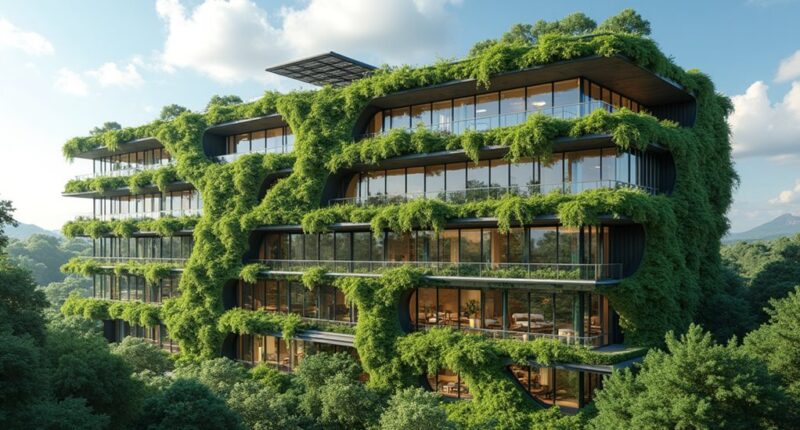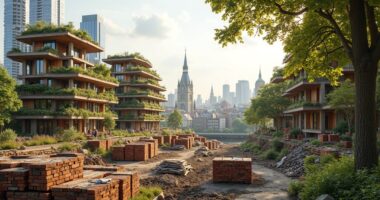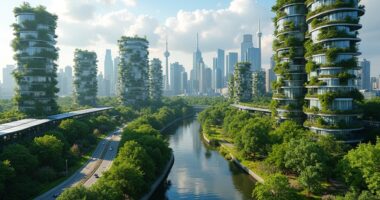Carbon-capturing buildings are at the forefront of regenerative architecture, and they’re not just a passing trend. By 2025, these innovative designs will not only shrink carbon footprints but also help heal our planet—think of them as eco-friendly superheroes. Utilizing cutting-edge tech, they capture CO2 and improve air quality while blending seamlessly into nature. It’s like giving Mother Earth a spa day. Curious about how these structures work their magic? Stick around for more insights!
Embracing Regenerative Architecture for a Greener Future
In a world where buildings often seem at odds with the environment, regenerative architecture emerges like a superhero, swooping in to save the day. This innovative approach is not just about reducing harm; it seeks to create a net-positive impact on the planet, restoring ecosystems rather than merely patching up the wounds of urbanization.
Think of it as Mother Nature’s version of a spa day for our planet—soothing, nurturing, and ultimately revitalizing.
One standout feature of regenerative architecture is the integration of carbon-capturing systems. Imagine buildings that not only house people but also act as carbon sinks, effectively removing CO2 from the air like a high-tech vacuum cleaner. Technologies like Direct Air Capture (DAC) are at the forefront of this trend, capable of snatching hundreds of tons of carbon from large commercial spaces each year, achieving net-negative emissions.
Regenerative architecture transforms buildings into carbon sinks, using cutting-edge technology to cleanse our air like a high-tech vacuum cleaner.
Talk about a building with a green thumb!
But regenerative design doesn’t stop at carbon capture. It also emphasizes resilience against climate change, incorporating features like green roofs and rainwater harvesting systems. These elements not only beautify the structure but also help mitigate flooding and reduce water consumption. Understanding ecosystems is essential in creating these adaptive and resilient features—it’s like giving the building a raincoat and a sunhat—prepared for anything Mother Nature throws its way.
When it comes to materials, regenerative architecture is all about eco-friendly choices, opting for sustainable options like bamboo and cross-laminated timber. The result? Structures that are not just functional but also harmonious with their surroundings. Beyond materials, these buildings often incorporate forest management principles to maximize carbon sequestration potential in surrounding landscapes.
And let’s not forget the role of AI in this revolution. Picture a digital architect that crunches numbers and optimizes designs for sustainability faster than you can say “photosynthesis”—nature’s favorite method of turning sunlight into lunch.
As 2025 approaches, regenerative architecture and its carbon-capturing marvels are not fading into the background; they’re here to stay, reshaping our cities into greener, more resilient spaces.
It’s time to embrace this architectural superhero, one building at a time.









